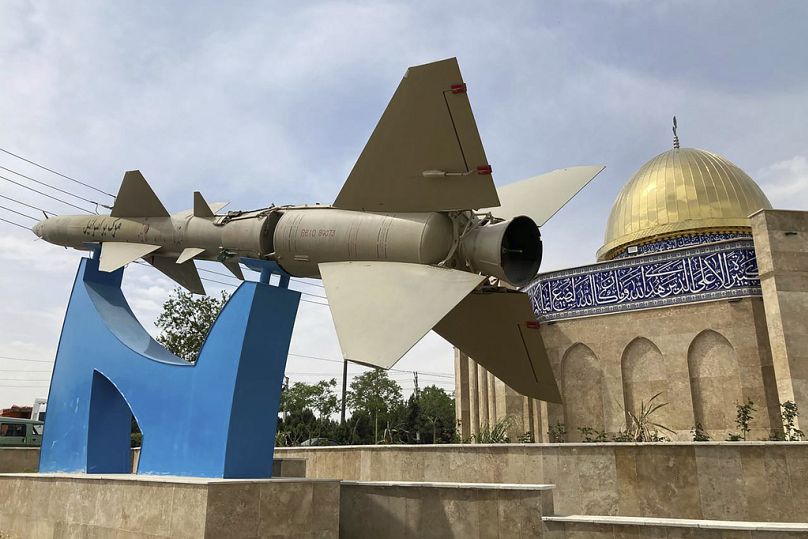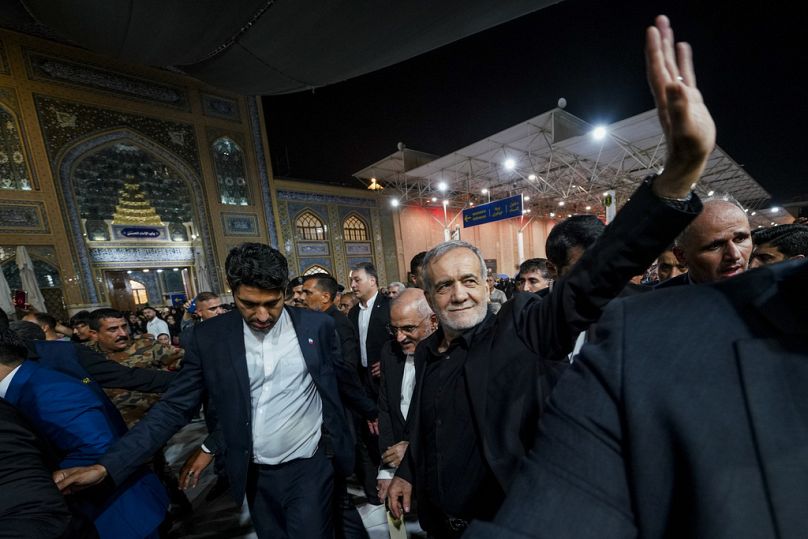More than ever, Iran needs to rebuild its image and identity — an identity that has been unfairly sacrificed for the ambitions of a select few, Babak Kamiar writes.
 ADVERTISEMENT
ADVERTISEMENT
Monday marks the second anniversary of the death of Mahsa Jina Amini, the young woman who died after arrest by Iran's morality police, an event that ignited widespread unrest across the country for weeks and months on end.
Protests began simultaneously with her funeral in her hometown of Saqqez, located in Iran's Kurdish region, and quickly spread to other cities.
This time, it wasn’t only Tehran and the larger cities that saw unrest. Smaller towns, typically more conservative and closed-off, also erupted.
Day by day, the number of demonstrators — mainly from Generation Z — grew. The pace of events was so rapid that few could have anticipated it. Some even went so far as to predict the imminent fall of the regime. Opposition groups, led by prominent political figures and celebrities, formed a coalition and united to conceive a plan for governing Iran's future.
Solidarity marches and street protests in support of Iranian women and girls gained momentum, compelling the government to retreat, at least temporarily, from enforcing certain regulations. Meanwhile, young people's demands grew more serious and focused.
However, after several months, the movement — lacking real unity among opposition forces and substantial field support from foreign powers, particularly the US — waned. The regime gradually regained control, launching waves of arbitrary arrests, politically motivated expulsion and show trials.
Sudden shift in power sparks sense of hope
Despite international pressure and human rights condemnations, the Iranian regime executed dozens of protesters and handed down heavy sentences to many others.
Months later, Iran's ultra-conservative parliament, in line with Ebrahim Raisi's government, voted in favour of the "Hijab and chastity bill," which faced significant opposition from the beginning.
Iran's military support for the Kremlin in the Ukraine war further isolated Ebrahim Raisi's government, which eventually collapsed following his death on what some claim was an orchestrated "accident".
Nuclear negotiations had reached an impasse, Iran's relations with the West, particularly the EU, deteriorated to their worst point in years, and ties with the International Atomic Energy Agency (IAEA) became strained.
Amidst a deepening economic crisis and surging inflation affecting the daily lives of most Iranians, the country seemed poised for further unrest. However, Raisi's sudden death and the subsequent early presidential election sparked a renewed sense of hope in parts of the population.
The approval of the former reformist health minister, particularly his decisive victory over the staunch conservative Saeed Jalili in the runoff, brought a fresh wave of optimism to Iran's disillusioned youth.
Now, weeks after Massoud Pezeshkian has assumed office, and on the eve of the second anniversary of Amini's death, many of his supporters are eagerly awaiting him to fulfil his promises.
Can Pezeshkian turn things around?
History will ultimately judge Pezeshkian, but what matters now is the level of support he receives from Iran’s parallel power structures. Many believe his presidency is part of a calculated strategy to maintain the regime's grip on power.
Whether Pezeshkian, seen by some as a "safety valve" for the system, can successfully navigate this path and win the trust of the youth and women remains uncertain.
The international community and the Iranian populace are keenly observing whether Pezeshkian's presidency will mark a turning point or merely continue the established patterns of the Islamic Republic.
Finally, Iran’s standing on the international stage will undoubtedly improve not through warmongering and alliances with aggressors but through peacebuilding and a return to the “dialogue among civilisations” paradigm.
More than ever, Iran needs to rebuild its image and identity — an identity that has been unfairly sacrificed for the ambitions of a select few.
We need to observe how and under what circumstances the resumption of "dignified and respectful" dialogue, as described by Abbas Araghchi, will unfold.
This is especially crucial for Europe, where relations with Iran have become increasingly complicated due to the Ukraine war, as noted by Iran's foreign minister.
The key question is whether Pezeshkian's visit to New York will present a new gesture of friendship toward concerned countries or simply echo the positions of the Islamic Republic's leaders in recent years. The world will be watching.
'Woman Life Freedom' lives on
Meanwhile, in the run-up to the anniversary of Amini's death, major Kurdish parties have called for a general strike. Businesses in many Kurdish cities have closed in support of the protest.
This comes amid severe security measures in the Kurdish regions of Iran, with some reports indicating that Amini's family has been prevented from leaving their home.
The behaviour of men in families has changed, and women are no longer the subordinates they were once expected to be.
Despite brutal repression and various forms of governmental pressure, from fines and social restrictions to the widespread presence of officers in metro stations, courageous young women continue to resist mandatory hijab requirements whenever possible.
The “Woman Life Freedom” movement has not died; it has not even faded away. Instead, it continues its natural course in a new form.
Babak Kamiar is the Head of the Persian Service at Euronews.
At Euronews, we believe all views matter. Contact us at view@euronews.com to send pitches or submissions and be part of the conversation.












